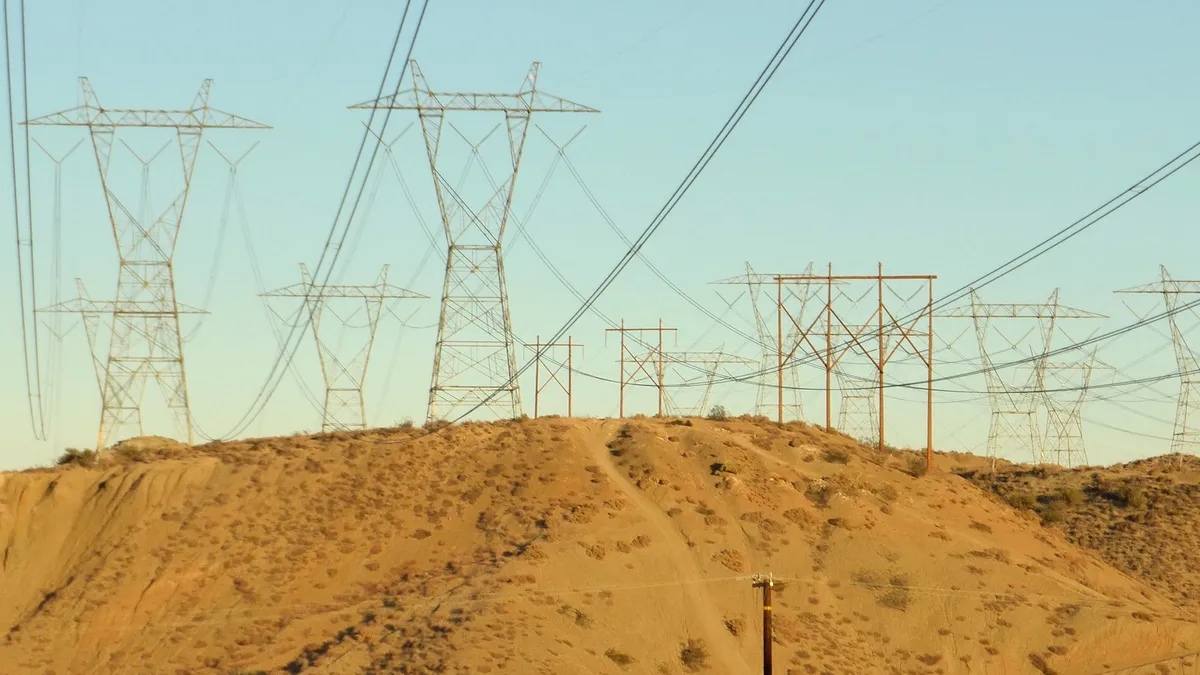Dive Brief:
- The California Independent System Operator on Monday issued a draft transmission plan that identifies 46 transmission projects, collectively costing around $9.3 billion, that will be needed to ensure the state can meet energy demand and add renewable generation to its system.
- The plan reflects the grid operator’s analysis of system needs over the next decade and will be sent to its board of governors for approval in May. This year’s draft plan includes a significant increase over the transmission investments approved by CAISO last year, which comprised 23 projects estimated to cost nearly $3 billion.
- “[I]f we’re going to capture the benefits of clean energy, we can’t build transmission at the same rate we’ve been building it – because we need so much of it, both to meet our targets but also to support electrification,” said V. John White, executive director at the Center for Energy Efficiency and Renewable Technologies. “So in our mind, transmission is the key infrastructure to California’s climate and clean energy goals, and for reliability.”
Dive Insight:
This draft plan represents the next major installment of infrastructure investment needed to meet California’s clean energy goals, CAISO President and CEO Elliot Mainzer said in a statement.
“In close coordination with regulatory agencies, load-serving entities and other key stakeholders, we endeavored to address the state’s reliability and policy needs in the most cost-effective and efficient way possible,” Mainzer added.
Of the 46 transmission projects included in CAISO’s draft plan, 24 – that are estimated to cost $1.76 billion – are required to ensure grid reliability, especially as part of the forecasted electrification of the transportation sector and built environment. The remaining 22 projects are “policy-driven,” according to the ISO, and are needed to meet the state’s renewable requirements. This latter category of projects are expected to cost $7.53 billion.
Last year, CAISO approved a plan that came with a $3 billion price tag, an increase over the $217 million average spending on transmission over the five preceding years. CAISO said forecasted electricity needs in California over the next decade have been rapidly increasing, which is also accelerating the pace at which new transmission infrastructure needs to be developed.
This year’s draft plan, for instance, is based on 2022 projections that the state will need to add over 40 GW of new resources to the grid over the next decade. However, analysis from the California Public Utilities Commission indicates that next year’s plan will need to be based on a projection of 70 GW of new resources by 2033.
There are a number of factors increasing forecasts on the amount of new energy resources California will need, according to Seth Hilton, partner at Stoel Rives – the state’s ambitious clean energy goals, the impacts of climate change on electricity demand and moves to electrify the transportation and building sectors.
The draft plan includes “a much more strategic and proactive approach” to aligning transmission planning with resource procurement and interconnection queuing, CAISO said. The CPUC will continue providing the grid operator with resource planning information and the ISO will then develop a final transmission plan, get started on those projects and ensure that the power industry is aware of the areas where transmission capacity will be available. The CPUC, meanwhile, will direct power providers to focus on procuring energy in those areas.
More broadly, CAISO has been trying to alter how it handles transmission planning, such as making more dramatic changes to its interconnection processes, Hilton said.
“They’re attempting to come up with some more creative solutions to deal with the massive number of resources they are attempting to interconnect, and the transmission that needs to be built,” he said.















